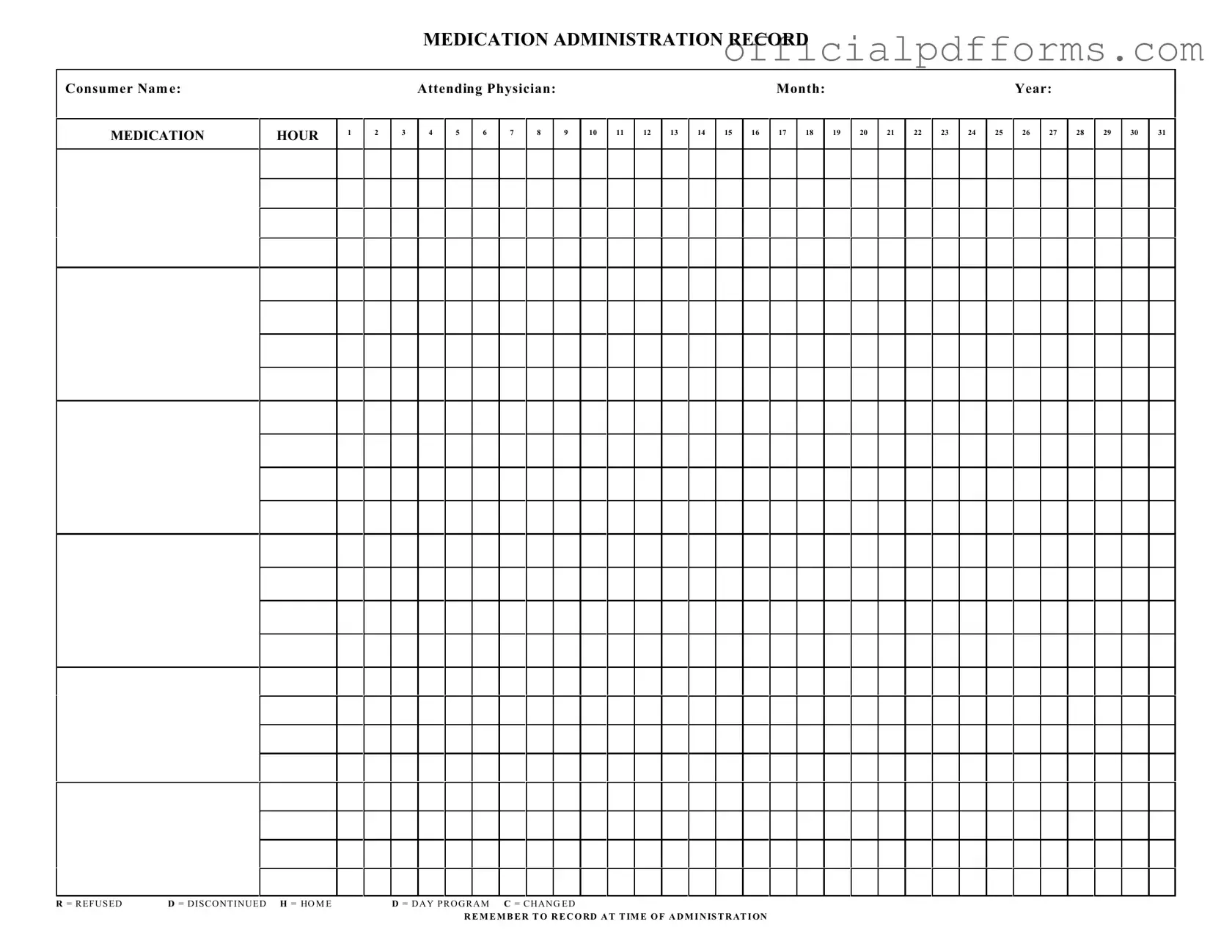What is the purpose of the Medication Administration Record Sheet?
The Medication Administration Record Sheet is designed to track the administration of medications to consumers. It ensures that all medications are given at the correct times and allows healthcare providers to monitor any refusals or changes in medication regimens.
Who is responsible for filling out the Medication Administration Record Sheet?
Typically, the healthcare provider or nurse administering the medication is responsible for completing the form. They must accurately record the time of administration, any refusals, and any changes to the medication as directed by the attending physician.
How should I record a refused medication?
If a consumer refuses to take their medication, the provider should mark an "R" on the corresponding date and time on the record sheet. It is important to document the refusal clearly and to follow up as necessary to ensure the consumer's health and safety.
What does it mean if a medication is marked as discontinued?
A medication marked with a "D" indicates that it has been discontinued. This could be due to a variety of reasons, such as a change in the treatment plan or side effects. It is crucial to ensure that all healthcare team members are aware of any discontinued medications to prevent errors.
How do I indicate a change in medication?
To indicate a change in medication, write a "C" next to the date and time of administration on the record sheet. Additionally, it is advisable to provide a brief note or explanation regarding the change to maintain clear communication among the healthcare team.
What should I do if I forget to record a medication administration?
If you forget to record a medication administration, make sure to note it as soon as you realize the oversight. Document the time and date it should have been recorded, and provide an explanation if necessary. Consistency in record-keeping is vital for patient safety.
How often should the Medication Administration Record Sheet be updated?
The Medication Administration Record Sheet should be updated each time medication is administered. This includes recording refusals, changes, and any other relevant information. Regular updates help ensure that the consumer's medication history is accurate and current.
Can the Medication Administration Record Sheet be used for multiple consumers?
No, each consumer should have their own Medication Administration Record Sheet. This practice helps maintain confidentiality and ensures that each individual's medication history is accurately tracked without confusion.
The form requires the following information:
-
Consumer's name
-
Attending physician's name
-
Month and year of administration
-
Time of medication administration
-
Any refusals, changes, or discontinuations marked appropriately
Where should I keep the completed Medication Administration Record Sheets?
Completed Medication Administration Record Sheets should be stored securely in a designated location, such as a medical record file or electronic health record system. Ensure that access is limited to authorized personnel to maintain patient confidentiality.
